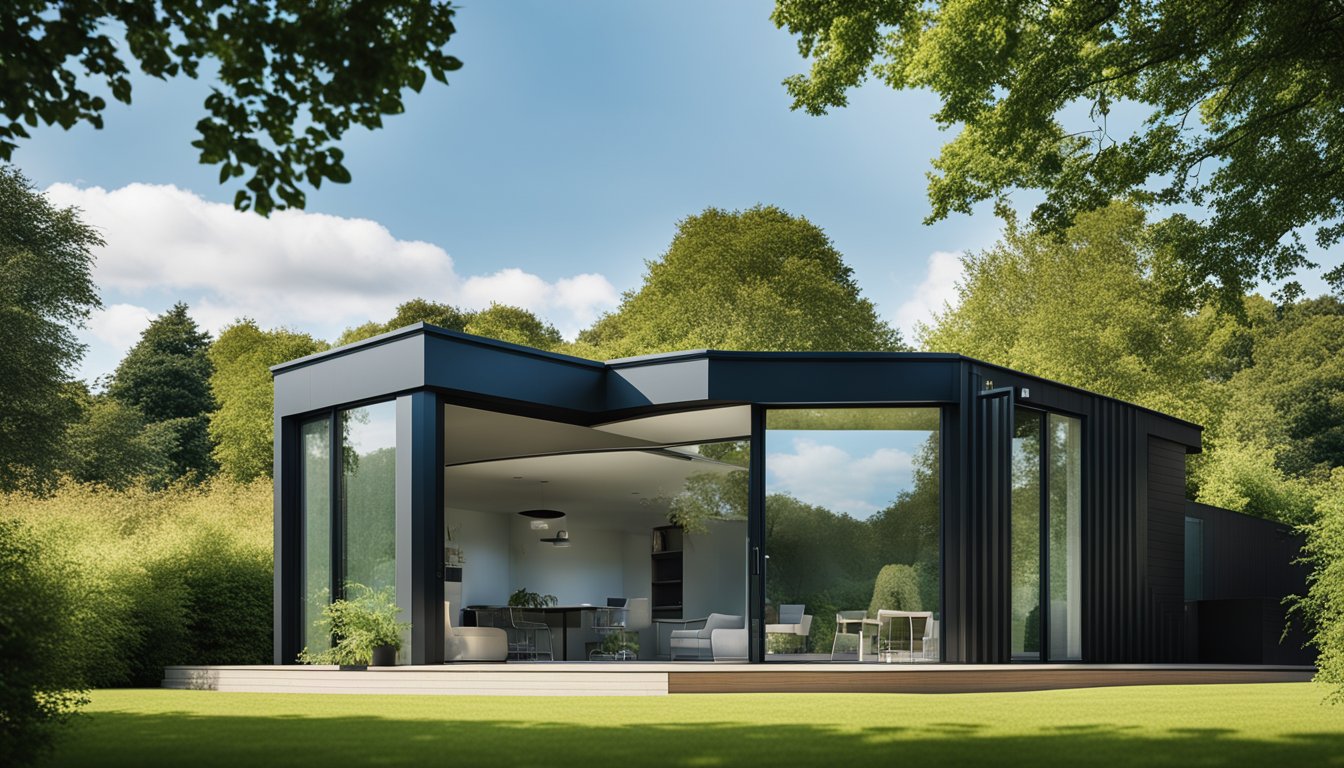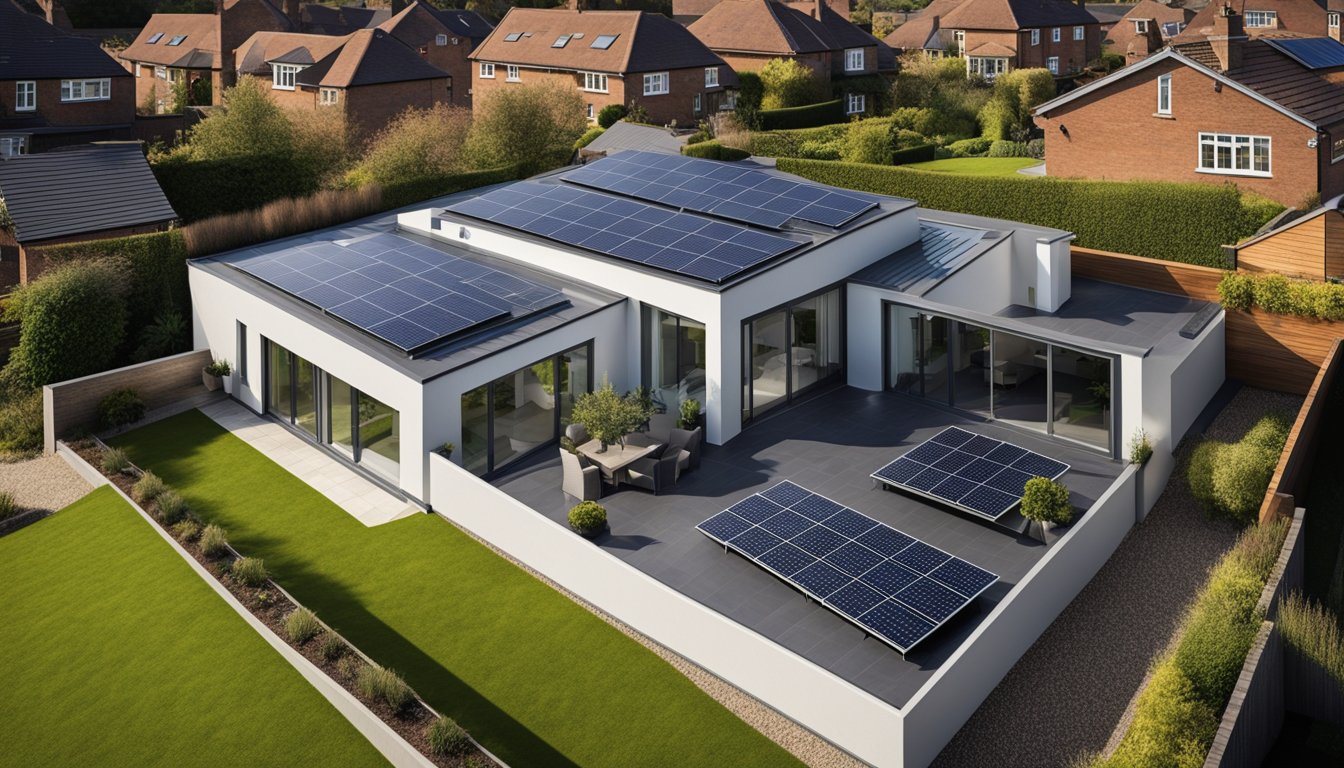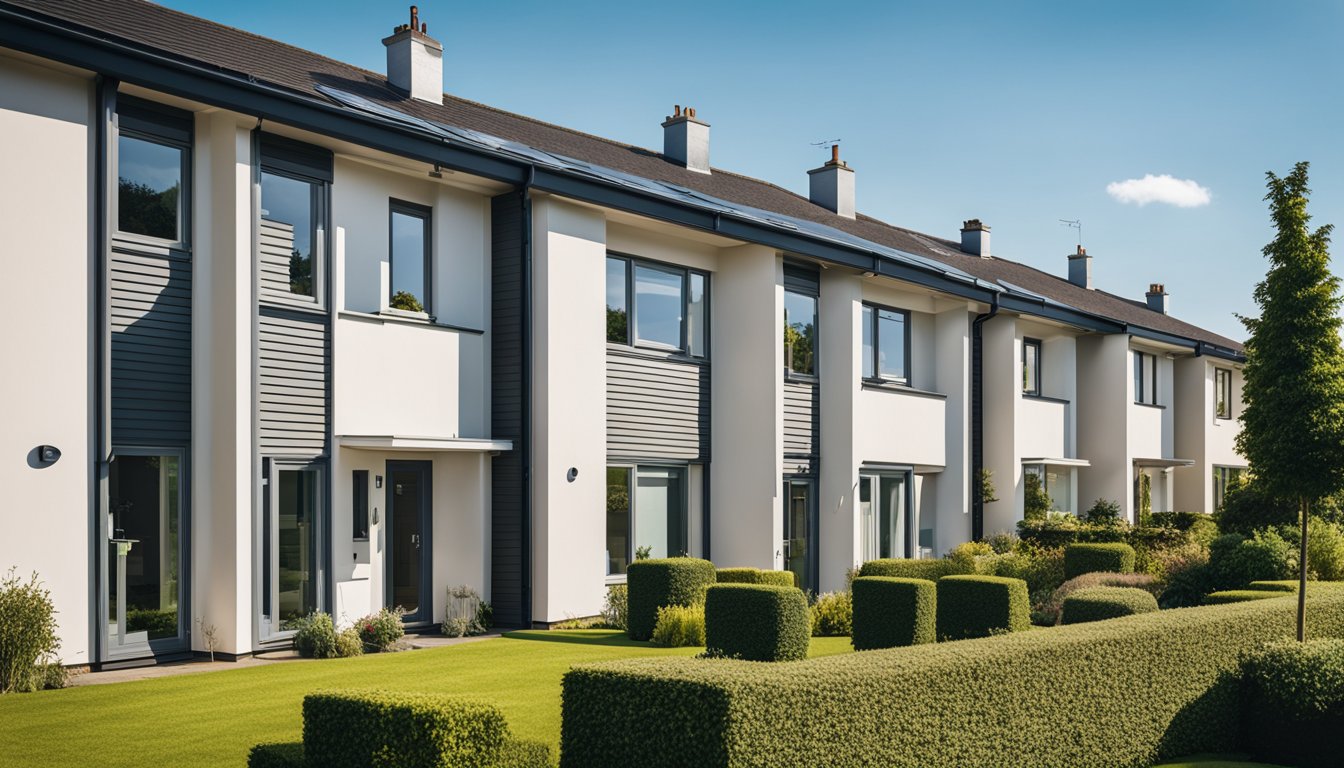Late updated: 10 Dec 2024 08:12
Written by: Oliver Bennett
Benefits Of Flat Roofing Systems For UK Homes: A Smart Choice For Modern Living
Flat roofing systems have become increasingly popular for UK homes, offering a modern and streamlined aesthetic. These systems are not only visually appealing but also provide practical advantages that cater to both urban and suburban living environments. The simplicity of a flat roof structure allows for cost-effective installation and efficient use of space, making it a viable choice for many property owners seeking to maximise their investment.

Enhancements in materials and installation techniques have significantly improved the durability and functionality of flat roofs. With advancements in weather-resistant materials, many flat roofing systems now guarantee protection against the elements, which can be essential in regions prone to severe weather. The architectural flexibility that flat roofs provide allows homeowners to creatively adapt their living spaces, whether by setting up rooftop gardens or installing solar panels.
Flat roofing is not without its considerations, such as maintenance and drainage requirements. Yet, these factors are often outweighed by the benefits they bring to a property’s efficiency and design possibilities. By understanding the fundamental aspects of flat roofing systems, UK homeowners can make informed decisions that align with their specific needs and preferences.
Key Takeaways
- Flat roofs offer cost-effective installation and space efficiency.
- Modern materials enhance durability and weather resistance.
- Maintenance considerations are key but often manageable.
Fundamentals of Flat Roofing Systems
Flat roofing systems are a versatile choice for many UK homeowners, offering practical benefits and appealing characteristics. We will explore the differences between flat and pitched roofs, various materials used in flat roofing, and the key advantages of these systems.
Comparing Flat and Pitched Roofs
Flat roofs and pitched roofs serve different architectural and functional needs. Flat roofs, though generally flat, have a slight gradient, ensuring efficient water drainage. They are typically more cost-effective due to simpler construction and reduced material requirements.
In contrast, pitched roofs boast a steeper angle, enhancing water runoff and adding traditional aesthetics to a home. The primary distinction lies in their application and aesthetics. Flat roofs often find use in modern and commercial structures, offering valuable space for amenities such as green roofs or solar panels.
Types of Flat Roofing Materials
When choosing materials for flat roofs, it's vital to consider longevity, cost, and environmental factors. Built-Up Roofing (BUR), one of the oldest systems, involves multiple layers of bitumen alternated with reinforcing fabrics, capping it with gravel for durability. EPDM (ethylene propylene diene terpolymer) offers excellent weather resistance and flexibility, making it a popular choice.
PVC and TPO (thermoplastic polyolefin) are known for energy efficiency and ease of installation. Additionally, green roofs, which incorporate vegetation atop waterproofing layers, are gaining popularity for their environmental benefits, such as improved insulation and reduced urban heat. These materials provide a spectrum of options to suit different needs and budgets.
Key Advantages of Flat Roofing
Flat roofing systems present several advantages that appeal to homeowners and commercial property managers. They are primarily appreciated for their cost-effectiveness due to reduced material and labour requirements. Their minimalistic design allows for quicker installation compared to traditional roofs.
More than just economical, flat roofs also offer versatility in utilising rooftop space, accommodating gardens, terraces, or even recreational areas. This adaptability makes them an attractive option for urban settings where space is at a premium. Furthermore, flat roofing solutions enhance energy efficiency. By supporting solar panel installations or reducing cooling needs, they contribute to lower energy costs.
Practical Benefits and Considerations

Flat roofing systems offer several functional advantages for UK homes, focusing on energy efficiency and installation ease. Their durability, weatherproof characteristics, and additional uses further enhance their appeal.
Enhancing Home Efficiency
Flat roofs contribute significantly to our home's energy efficiency. Their construction allows for the seamless integration of solar panels, which can reduce electricity bills. This kind of roof also supports efficient HVAC systems due to its compact design, minimising heat loss during winter and heat gain during summer.
Additionally, the reflective nature of some roofing materials further enhances temperature regulation. Opting for materials that reflect sunlight can be particularly beneficial in reducing cooling costs during warmer months. Energy-efficient flat roofs not only tackle environmental concerns but also provide financial savings.
Durability and Weatherproofing
When it comes to durability, flat roofs are particularly robust. They are engineered to withstand harsh weather conditions, offering reliable weather resistance that protects our home against wind and rain. The materials used, such as modified bitumen and rubber membranes, are known for their resilience.
These roofs are designed to handle the unique challenges posed by the British climate. Their structure ensures effective water drainage, reducing the risk of leaks. Regular maintenance, including inspections, ensures these roofs continue to hold up well over time.
Installation and Maintenance
Flat roof installation is often more cost-effective and straightforward than pitched alternatives. Installation costs tend to be lower due to decreased material and labour requirements. The simpler design can be advantageous for those prioritising budget without sacrificing quality.
In terms of maintenance, flat roofs offer ease of access, making regular inspections and maintenance tasks easier to accomplish. Repair costs are typically manageable, as minor issues can be swiftly identified and rectified. Thus, while they need consistent care, the associated costs remain reasonable.
Additional Functionalities
Flat roofs provide us with additional usable space, which we can creatively utilise. They can serve as a modern aesthetic feature, enhancing the overall look of our property. There is potential for us to extend our living area by using the roof as a terrace or garden.
Furthermore, these roofs accommodate features like solar panels more easily due to their vast surface area. They also support the installation of water drainage systems, which can be crucial in managing rainwater efficiently. This adaptability underscores the multifaceted benefits of flat roofing systems in meeting diverse needs.
Frequently Asked Questions

Flat roofing systems are popular for their cost-effectiveness, modern design, and adaptability for extensions. We'll cover prevalent inquiries encompassing benefits, energy efficiency, maintenance, drainage, regulations, and versatility for UK homes.
What are the potential benefits of installing a flat roofing system on a UK home?
Flat roofs offer several advantages, including reduced construction costs due to fewer materials required compared to pitched roofs. Their straightforward design also supports contemporary aesthetics, making them a favourite for modern homes. Furthermore, they provide extra usable space for solar panels or rooftop gardens.
How does a flat roof compare to a pitched roof in terms of energy efficiency for homes in the UK?
Generally, flat roofs can provide excellent energy efficiency when properly insulated. The consistent layer of insulation used can reduce heat loss. However, pitched roofs traditionally have the advantage in terms of natural ventilation. Ensuring proper insulation and ventilation is crucial for energy efficiency in flat roofs.
What should homeowners consider regarding maintenance for flat roofing systems?
Frequent inspection and maintenance are necessary to prevent water pooling and leaks. Homeowners should regularly check for blocked drains, damage from weather, and cracks in the roofing material. Maintenance may involve sealing splits and ensuring the drainage system is functioning efficiently to increase the roof's lifespan.
How do flat roofs handle drainage, and what are the implications for UK properties?
Proper drainage is essential to the longevity of flat roofs due to the UK's climate. Efficient drainage solutions like internal drains, scuppers, or gutters are crucial. Without adequate drainage, water can pool on the surface, leading to leaks or structural damage over time.
What are the key regulations governing the installation of flat roofs in the UK?
Flat roof installations in the UK must comply with building regulations related to thermal insulation, drainage, and structural integrity. It's important to adhere to these regulations to ensure safety and efficiency. Consulting local authorities or a professional contractor can help navigate these requirements.
To what extent does a flat roof offer versatility for home extensions or additional structures in the UK?
Flat roofs are incredibly versatile, serving as a foundation for various projects, such as rooftop terraces or additional rooms. Their design allows for easier construction of extensions, making them an appealing option for homeowners seeking to expand living spaces. This flexibility supports diverse architectural projects while maximising space usage.
